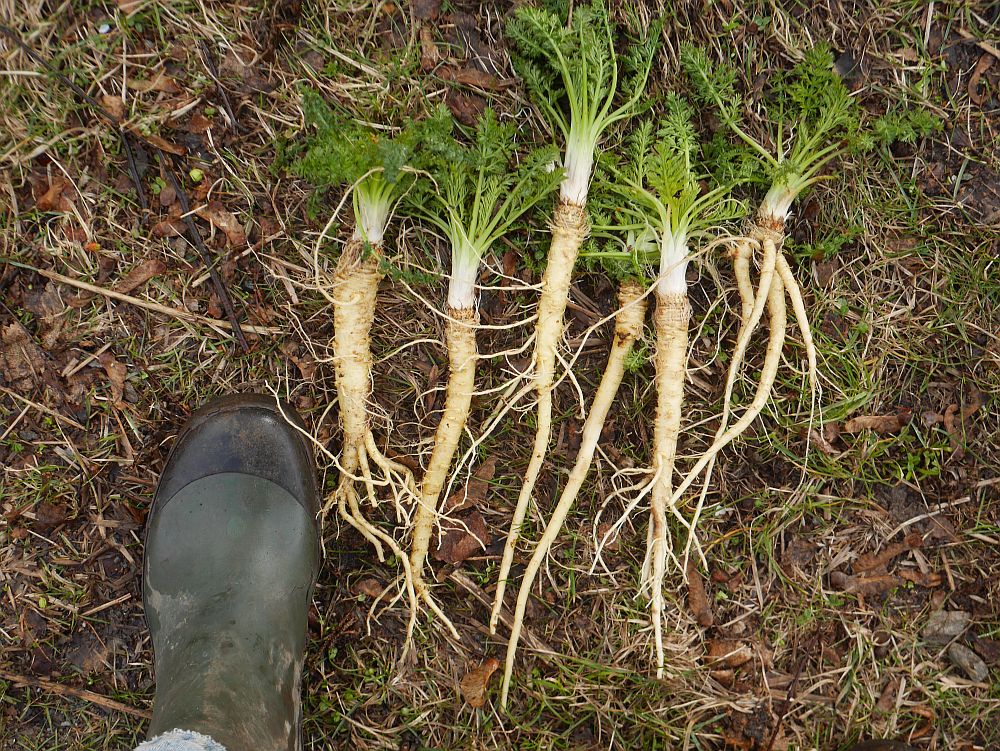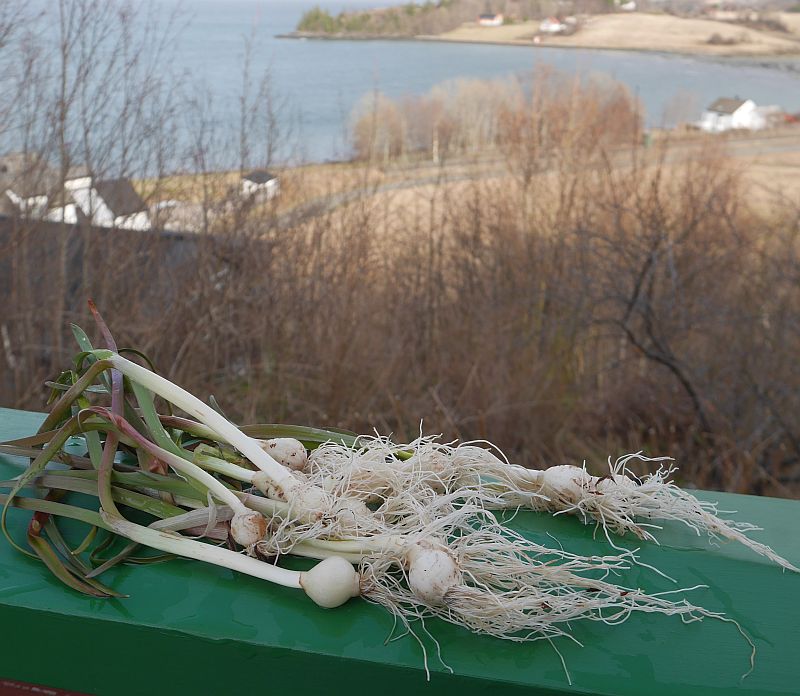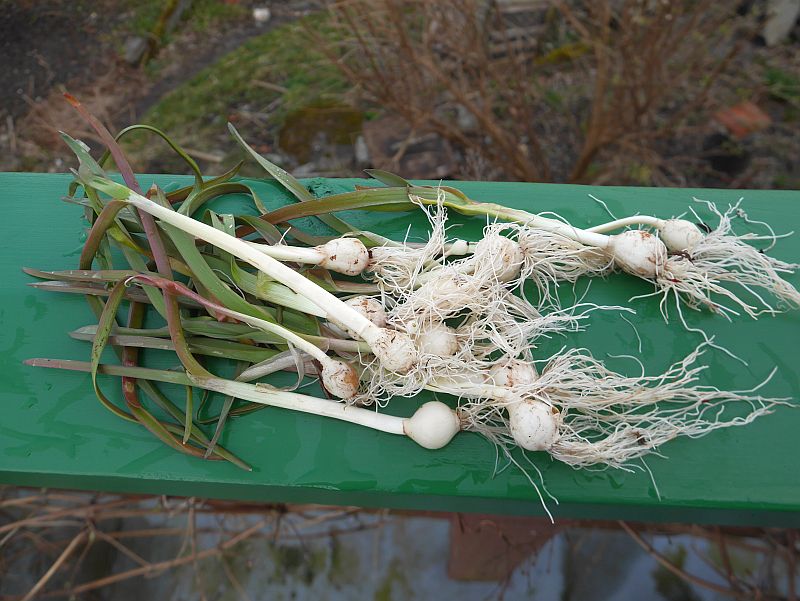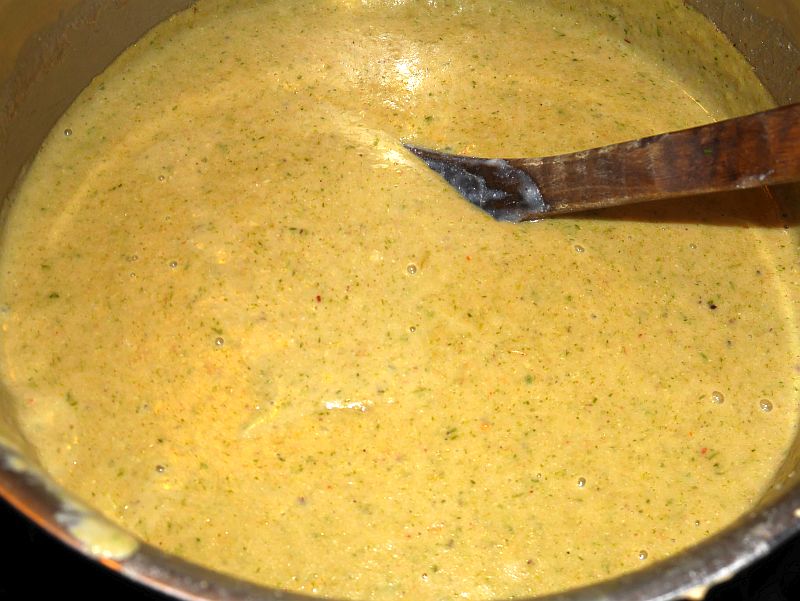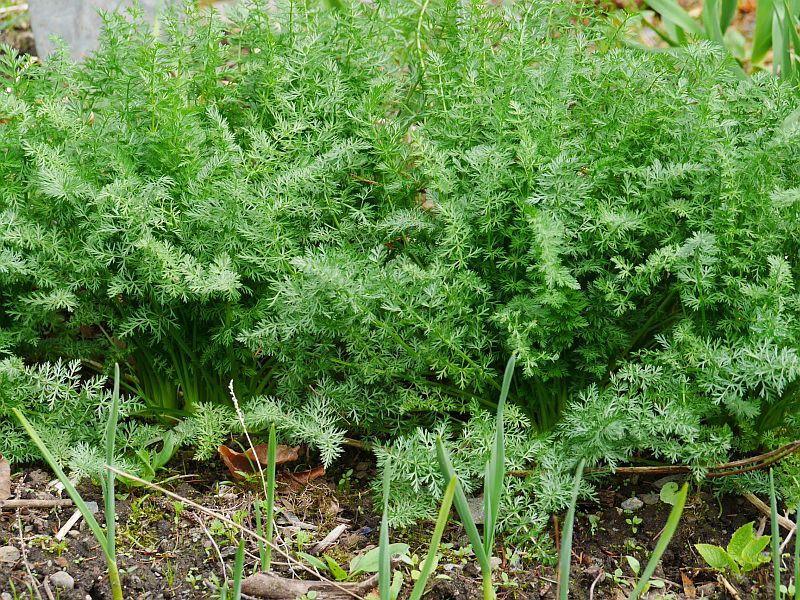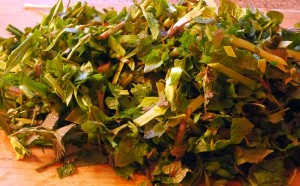Tonight’s 22 greens from the garden with yacon used in a quinoa stir-fry (with garlic and chili in addition):
Brassica oleracea (perennial kale / flerårig kål)
Hydrophyllum virginianum (waterleaf, indian salad)
Tragopogon pratensis (Jack-go-to-bed-at-noon / geitskjegg)
Angelica spp. (kvann)
Allium carinatum
Allium ursinum (ramsons / ramsløk)
Primula elatior (oxlip / hagenøkleblom)
Hablitzia tamnoides (Caucasian spinach / stjernemelde)
Carum carvi (caraway / karve)
Myrrhis odorata (sweet cicely / spansk kjørvel)
Polymnia edulis (yacon)
Urtica dioica ( stinging nettle / brennesle)
Campanula latifolia (giant bellflower / storklokke)
Ficaria verna (lesser celandine / vårkål)
Rumex acetosa (sorrel / engsyre)
Dystaenia takesimana (giant Ulleung celery)
Hemerocallis spp. (day lily / daglilje)
Taraxacum spp. (dandelion / løvetann)
Rheum ribes
Armoracia rusticana (horseradish / pepperrot)
Allium nutans
Aegopodium podograria (ground elder / skvallerkål)

Tag Archives: Carum carvi
More perennial vegetables for dinner!
A new collection of perennial vegetables from the garden on 25th April 2020, now back to cool, overcast weather. All are managed in some way.
Carum carvi (caraway / karve) greens
Urtica dioica (nettle / nesle)
Aegopodium podograria (ground elder / skvallerkål)
Allium fistulosum (Welsh onion /pipeløk)
Hablitzia tamnoides (Caucasian spinach / stjernemelde)
Campanula latifolia (giant bellflower / storklokke)
Myrrhis odorata (sweet cicely / spansk kjørvel)
Allium ursinum (ramsons / ramsløk)
Taraxacum spp. (dandelion / løvetann) 
Caraway root breeding and Karvekaalsuppe
I’ve been selecting caraway (Carum carvi) through 4 generations now for larger roots. I plan to have a larger number of plants from next year at our community garden (Væres Venner). I selected 5 plants for seed yesterday and they were quite a decent size. The remainder with the greens were used in a delicious karvekaalsuppe (caraway soup) yesterday with sand leek / bendelløk (Allium scorodoprasum). I plan to offer seed from this selection in KVANN’s (Norwegian Seed Savers) autumn catalogue!
Karvekaalsuppe
This week’s veggie karvekaal soup was made from both leaves and roots, first fried in a little butter with onion, garlic, sweet marjoram, chili, salt and pepper with a little barley miso. Delicious!
When we had children, first Robin in 1983 followed by Hazel (1986), I had less time to forage for food and started moving some of my favourite wild edibles into my garden. One of the first was Carum carvi (caraway / karve). My foraging mentor, Jan Erik Kofoed, had taught me about using the spring greens and how not to confuse it with cow parsley (hundekjeks) and yarrow (ryllik) which it often grows together with here. Locally it grows on coastal rocks and meadows, further afield on farmland. However, I could never find enough. It grew well in the garden and I had it in the same spot for over 20 years, self-seeding and always there, giving the impression of being perennial.
Caraway was probably taken by the Vikings to Shetland, Iceland and Greenland, where it is still found. Norwegian explorer Fridtjof Nansen describes having eaten karvekaalsuppe in 1888 at the beginning of the first crossing of Greenland where they pitched their tents on a grassy area: ‘…after a strenuous day, a fantastic warm karvekaalsuppe, which will be difficult to forget, was our reward for our efforts’.
In Norway, karve grows throughout the country, in the south even being found in the mountains and, in the north, to the Arctic Ocean north of 70°N. Its range otherwise is throughout northern Europe including the Baltic states, most of Central Europe and east into Central Asia, Mongolia, Kamchatka, northern China and spread in the Himalayas. It is also found in Iceland and Greenland and has naturalised in many parts of North America. Outside of Norway I’ve also found documentation of using the spring leaves in soup both in Estonia, Poland and Slovakia.
More on the multi-purpose plant caraway on my blog as a root vegetable, spice or edimental: http://www.edimentals.com/blog/?s=caraway

